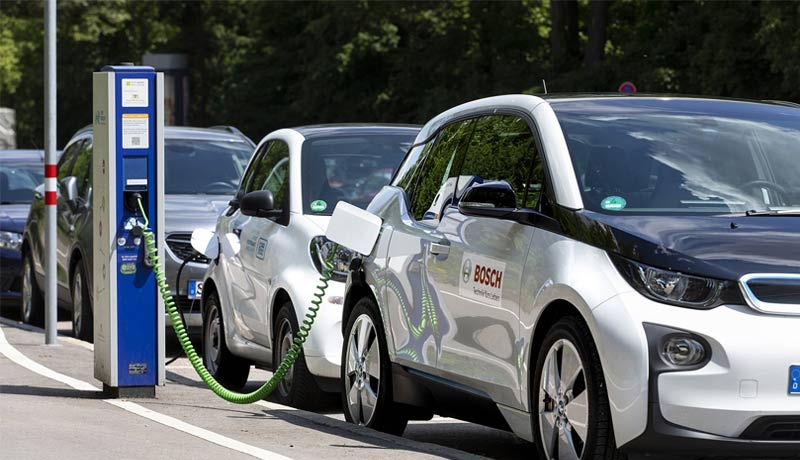
Bosch is developing mobility solutions for all sorts of cars, as well as making smartphones and people’s homes part of the mobility equation. The technology and services provider will present its solutions for customised, automated, connected, and electrified transportation at IAA Mobility 2021 in Munich.
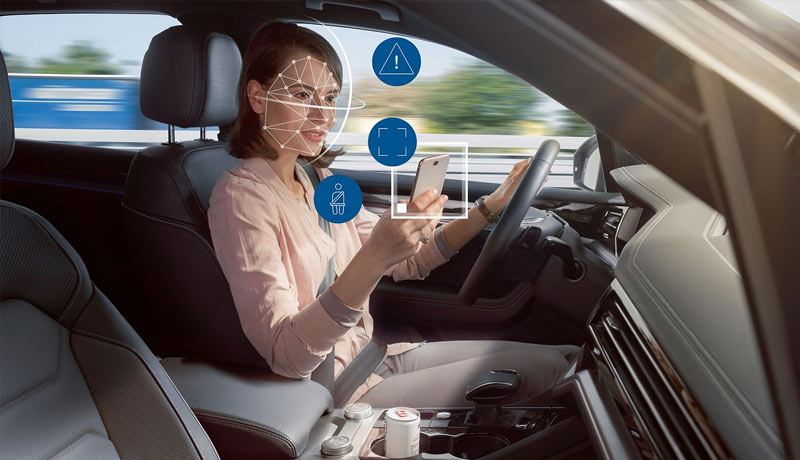
Bosch show car: Electric vehicles will become increasingly prevalent in the future. They will become more connected to other road users and their surroundings, taking on more driving duty themselves and providing tailored services to their passengers. Bosch technology for automated, electric, personalized, and networked mobility, this future mobility vision of mobility is being made possible. This demands extensive system knowledge as well as complete software and hardware experience, which the organization possesses. Bosch, for example, is working on central computers for future electronics architecture. These car computers are used for assisted and automated driving, vehicle motion control, cockpit functions, and body electronics, among other things.
Driverless parking: In a live demonstration, Bosch and nine project partners will demonstrate the future of parking. This is made possible by the interaction of intelligent parking garage infrastructure and vehicle technologies. A smartphone command drives cars automatically to their designated parking bays in Bosch and Mercedes-automated Benz’s valet parking system, which eliminates the need for driver monitoring. While guiding the vehicle, sensors in the parking garage check the driving aisle and its surroundings. The in-car technology translates infrastructure commands into safe driving moves.
An enhanced cycling experience: Riding an electric bike is beneficial for people’s health and the environment and being a lot of fun. Connected products and services improve cycling and bring e-bikers closer to the digital world. Bosch will demonstrate new connected-biking solutions, allowing attendees to experience how much fun power-assisted cycling can be.
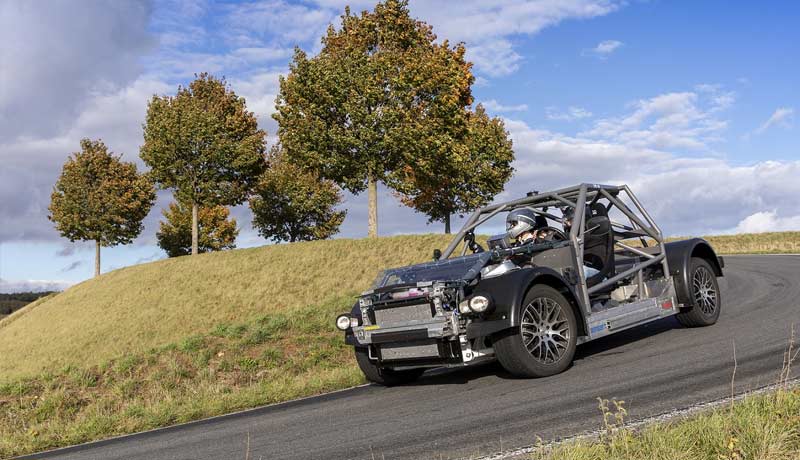
Bosch wants to be a key player in climate-neutral mobility. The company has set itself the goal of making all vehicle classes ready for upcoming emissions requirements. Bosch has a broader electric driving portfolio than any other company – from e-bikes to passenger cars to heavy trucks as an innovation leader.
Battery-electric power for two- and four-wheeled vehicles: Bosch’s portfolio comprises all the building blocks for the electrification of passenger automobiles, from powertrains to steering systems to brakes. The e-axle, for example, is a single device that incorporates power electronics, electric motor, and transmission. Bosch also assists automakers in bringing electric vehicles to market faster than ever by providing pre-integrated system solutions for vehicle platforms. The advanced driving module, paired with partner solutions to form a comprehensive axle module for the front and rear axles, is the key to the optimum interplay of the powertrain, steering, braking, and vehicle control. In addition to efficient powertrains, Thermal management is used by Bosch to extend the range of electric and hybrid vehicles. The battery’s efficiency is improved by precise management of hot and cold air currents, which guarantees that all components operate within their optimal temperature range. Drives and control units for electric two-wheelers are also available from Bosch. The two components integrated into a compact system ensure precise motor control, dependable riding performance, and optimal torque development.
Fuel-cell system: Long-range and quick refueling are two advantages of mobile fuel cells. Long-haul routes and commercial vehicles are where they shine. Fuel cells run on green hydrogen, allowing vehicles to operate without emitting CO2. Bosch develops all major system components, including full systems, to production readiness. The company collaborates with Swedish specialist Powercell on the stack, which transforms hydrogen and atmospheric oxygen into electrical energy. The stack will be mass-produced in 2022, with the debut of the whole fuel-cell system – the Bosch fuel-cell power module – anticipated for 2023.
Services for electromobility: Bosch’s Cloud Battery extends the life of electric car batteries. Cloud-based software analyses battery state regularly and takes appropriate steps to avoid or reduce cell aging. The tamper-proof “usage certificate” records the battery’s condition over its entire service life, providing a more accurate picture of its residual worth if the car is sold. Bosch’s charging services, such as Convenience Charging, make it simple for electric car owners to identify – and pay for – publicly accessible charging stations. Furthermore, the integrated recharging and navigation solution provides a precise range forecast and route planning that includes recharging stops and the ability to define personal preferences, such as charging stations near eateries.
High-speed electromobility: For everyday life and the racetrack – Bosch is committed to becoming the leading supplier of electrified powertrain solutions, both in electromobility for production vehicles and in electrified motorsports. The company has entered into a long-term technology and development partnership with the DRAGON/PENSKE AUTOSPORT Formula E Team.
Recharging at home: Bosch’s intelligent energy manager allows homeowners to minimize CO2 emissions and save money on their energy bills. It maximizes the use of home-generated solar energy and distributes it intelligently throughout the building by acting as an interface between a Bosch heat pump and a photovoltaic system. Electric automobiles will be able to be integrated into the Bosch energy management system in the future, in addition to heating and hot water. Compatible wall boxes can then be used to charge vehicles using as much of the electricity generated at home as possible.
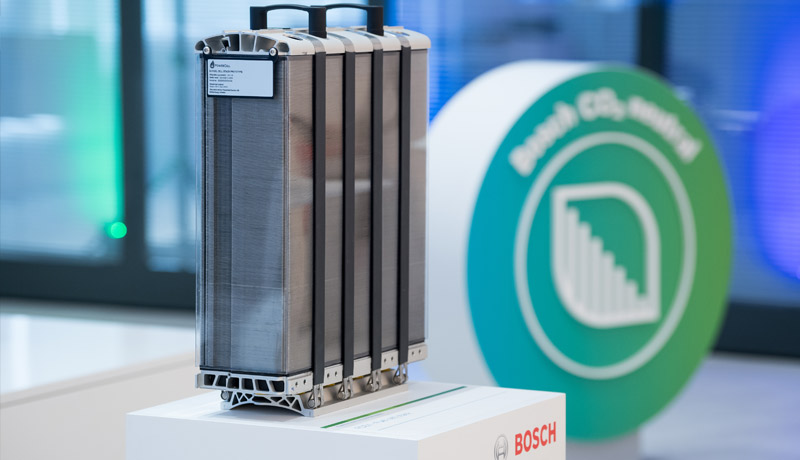
Vehicles that undertake more driving chores themselves are a critical building component for tomorrow’s transportation, providing less stress, smoother traffic flows, and increased safety. An automated car must see its surroundings, make decisions, and accelerate, brake, and steer in the same way that a human driver can. Bosch is creating the technical underpinnings for automated driving one step at a time. It is already paving the path for all degrees of automation with its driver assistance systems.
Surround sensing for all traffic situations: Sensor technology provides the foundation for more automated and assisted driving. The vehicle must be able to distinguish objects, people dependably, and other road users to drive safely. The more complicated the driving task, the more crucial their contact becomes. Traditional image-processing algorithms are combined with artificial intelligence (AI) methods in Bosch’s multi-purpose camera. The camera analyses and understands what it sees using AI, ensuring accurate object recognition and good surround sensing. Aside from camera, radar, and ultrasonic sensors, Bosch is working on a long-range lidar that uses various sensor principles.
Localization technology for exact positioning: Automated cars must always be aware of their whereabouts. Bosch provides a complete set of hardware, software, and services that enable automated cars to pinpoint their exact location. The VMPS (vehicle motion and position sensor) employs satellite navigation signals and data from a correction service and information from the steering-angle and wheel-speed sensors to determine the exact position. The Bosch road signature cloud-based map service creates additional layers for high-resolution maps using data from radar and video sensors and vehicle motion data.
Redundant braking and steering systems for safe and energy-saving driving maneuvers: It’s always better to be cautious than sorry, especially when it comes to safety-critical functions in automated driving. Bosch’s electric steering technology provides enhanced safety thanks to several redundancies. In the unlikely case of a failure, the system can still maintain 50% of its electric steering capabilities. Bosch has also included a redundant architecture into its braking systems: if the iBooster (electromechanical brake booster) or the ESP (electronic stability programme) fail, the other will take over. If the programme fails, the vehicle may be halted by another component. The integrated power brake system, which combines brake boosting technology and ESP capability, is backed up by a second braking unit. In automated cars, this is an extremely significant necessity. Furthermore, Bosch’s regenerative braking systems reduce CO2 emissions by switching between generator and friction braking in a very smooth, driver-unnoticeable process, allowing braking energy to be converted back into electrical energy and fed back into the battery every time the vehicle is braked.
Services for automated driving: Long before catastrophic conditions arise, Bosch’s predictive road-conditioning services sound the alarm in the event of prospective threats. They give you real-time updates on road conditions and hazards including aquaplaning, ice, and snow. This allows automated vehicles to anticipate road conditions accurately, change their driving behaviour to the conditions, choose a new route, or even request that the driver take charge.
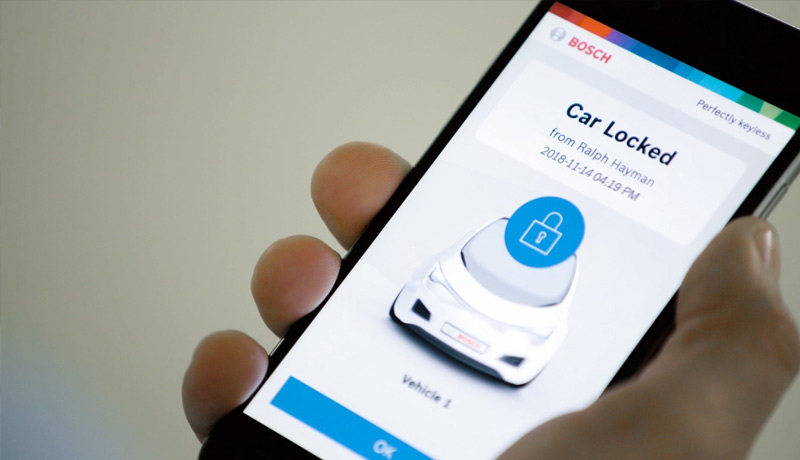
Bosch connects vehicles with each other and with their surroundings: Bosch links systems, components, and services inside and outside the car to make transportation more efficient, safer, and relaxing. Users, vehicles, and the environment are all connected seamlessly, making driving more fun and offering a personalised mobility experience.
Smart car meets smart home: Bosch transforms automobiles into smart home command centers, using Mercedes-MBUX Benz’s infotainment system to operate Bosch Smart Home applications via voice commands from the vehicle. The system may manage light switches and smart adapters, as well as check the status of motion detectors and door/window contacts, in addition to shutters and heating thermostats. The driver can stay focused on the road by using voice commands.
Guardian angel for all areas of life: Bosch has developed a digitally connected emergency call system for bikes and other vehicles called Help Connect. Accidents can be detected thanks to a clever crash algorithm applied to the acceleration sensors in the Bosch MSC motorcycle stability control system. A smartphone app sends data about the accident scene and the rider to a service centre, sending it to emergency responders. If the motorcycle does not have an accident detection system permanently installed, the sensor data from the smartphone can be used to trigger an emergency response. Bosch Help Connect may also help you at home, in the gym, or when you’re out cycling.
Indoor monitoring for better occupant protection: Bosch has created a system that combines cameras and artificial intelligence to improve the safety of car occupants. The interior monitoring system detects driver tiredness and distraction and occupants in a dangerous seating posture. It alerts inattentive drivers, suggests taking a break if they become weary, and can reduce vehicle speed, based on the intentions of the automaker and legal restrictions. The system also improves convenience by automatically adjusting the seat, mirrors, and steering wheel height based on personal preferences and allowing gesture control of the entertainment system.
Wrong-way driver alert: Within seconds, Bosch’s cloud-based wrong-way driving warning system alerts both the wrong-way driver and all other road users in the vicinity of the coming hazard — far faster than traffic reports on the radio. KODA became the first automaker in the world to choose Bosch’s digital guardian angel in early 2021. The life-saving alert is displayed directly on the vehicle’s dashboard display. This business has 2.5 million active users in 20 European countries as a smartphone app solution.
Smartphones as car keys: Sensors in the car recognize the owner’s smartphone as securely as a fingerprint and open the vehicle only when they request it using Perfectly Keyless. As a result, the cell phone has taken the place of the traditional auto key. The system also has additional practical everyday advantages thanks to ultra-wideband technology: it’s now much easier to maneuver the car into small parking spaces via remote control or open the trunk remotely so package handlers can put deliveries in it. Perfectly Keyless illuminates the route to the car by turning on the headlights, offering extra safety in the dark in big parking lots where it is difficult to detect vehicles.